 |
The whole painting -
'Paddy' - Black and white cat in the style of a painting of Thomas Wentworth. He is holding a salamander of enamelled gold with emeralds and diamonds identical to the one found in the Cheapside horde - a great amount of jewellery found in the early 20th century in a small box in the basement of an Elizabethan jeweller's shop although this one has an additional gold chain entirely because Paddy has to hold it and cats don't have opposing thumbs (imagine what they could do if they did). |
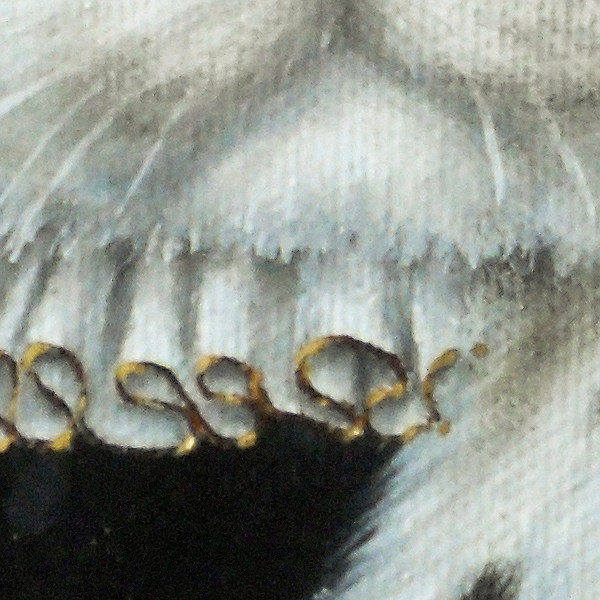 |
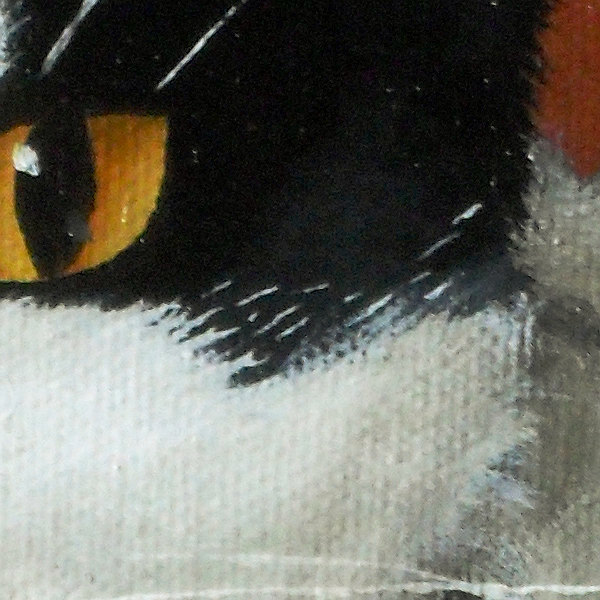 |
| Details of his gold-trimmed ruff. |
The border between the black and white areas on many cat has white hairs that occur in the black area, close to the border - Paddy is no exception to this phenomenon. |
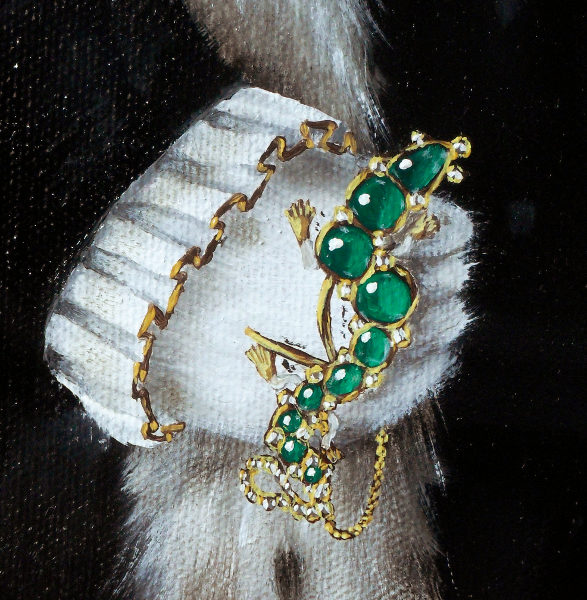 |
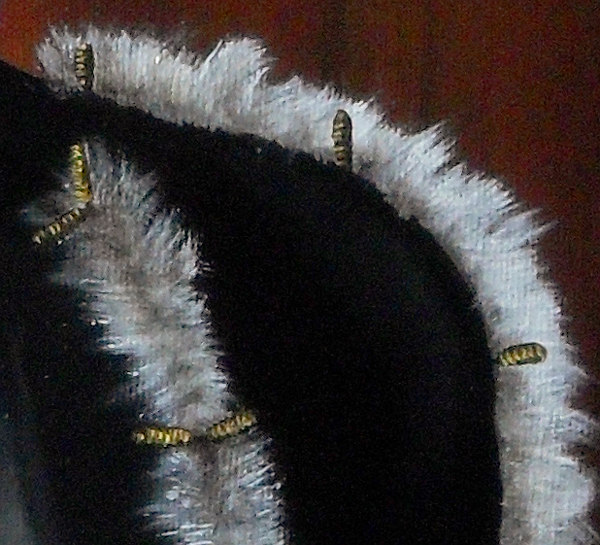 |
| Details of the emerald and diamond salamander (with additional chain). The original was found in the Cheapside horde which was a small box, found in the basement of a jeweller's that had not been looked at since just after the reign of Elizabeth I. In effect, it had been lost to the world and only reappeared when workmen dug it up at the beginning of the 20th century. As this painting places the central character at the time of Elizabeth I, I thought it would be appropriate to indicate great wealth by him holding that very piece of jewellery before it was lost to us all. The piece itself is gold that has in places been enamelled as much gold jewellery was at the time and in it are set square diamonds and emeralds that have been cut so that their surface is rounded - cutting emeralds so that they had flat faces apparently wasn't done until much later. The chain is added simply because cats don't have opposing thumbs. |
Detail of the tied cuts that were fashionable at the time. Many garments had 'cuts' in them allowing the underlying material to be seen or poke through - as in the case of fur. The longer cuts are tied together by these small, golden toggles. Here, you can also see that white fur is not just white - there are around ten layers of various greys here so that the fur looks like real fur. One of the problems with canvas is that the level of detail you can paint on it is to a great extent dependent upon the depth and pitch of the canvas' weave - you will be able to see the difference between the two when you look at the corresponding image in the Paddy Panel details page. |
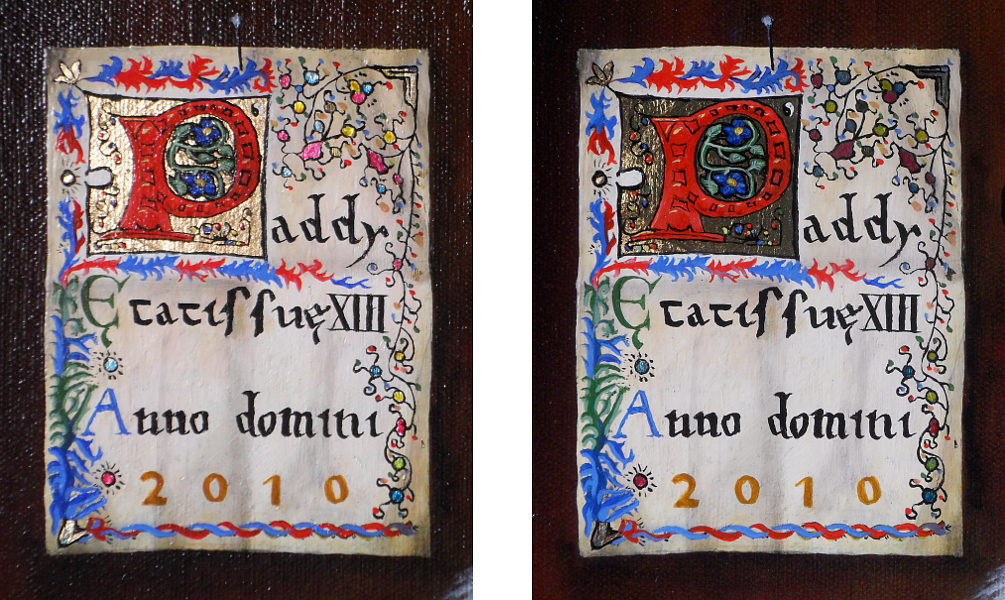 |
This is a stereoscopic image of the illuminated parchment in the top left of the painting. In order to fulfil the claim of being truly illuminated, it has to have gold leaf on it (this prerequisite could be just those who know how to use gold leaf trying to belittle those who don't). Here, the parchment has gold leaf in the letter 'P' and a few other places around it and, it also has silver leaf that has had transparent paint put upon it so as to colour it.
To view, cross your eyes slightly so that the images are superimposed and your brain will do the rest.
Why a Stereogram? Stereograms are normally thought of as making flat images into three dimensional images whereas in fact, they simply allow different variants of an image to be sent to different eyes. Here, instead of a three dimensional object, we have a two-dimensional object that has areas with different directional reflective properties - the the gold and silver leaf reflect light like a mirror whereas the normal paint reflects light fairly equally in all directions. This stereoscopic pair allows your brain to see how the metal leaf interacts differently with the light in the room. |
 |
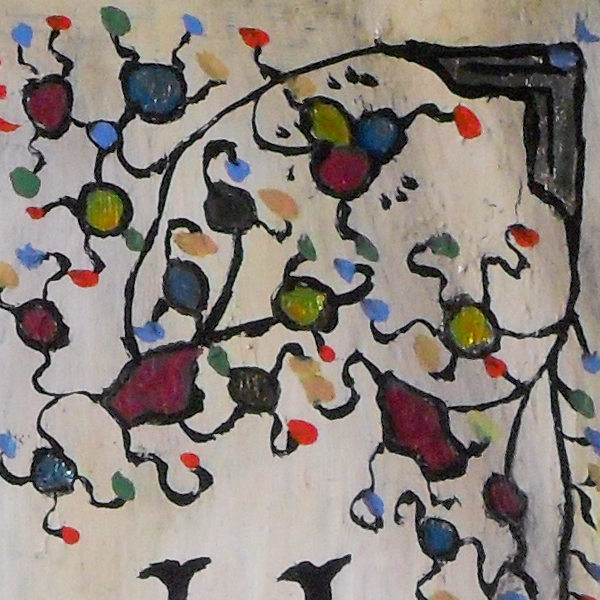 |
| Here is that letter 'P' close-up. |
And here are some of the coloured balls that are created by putting transparent colours onto silver leaf. |
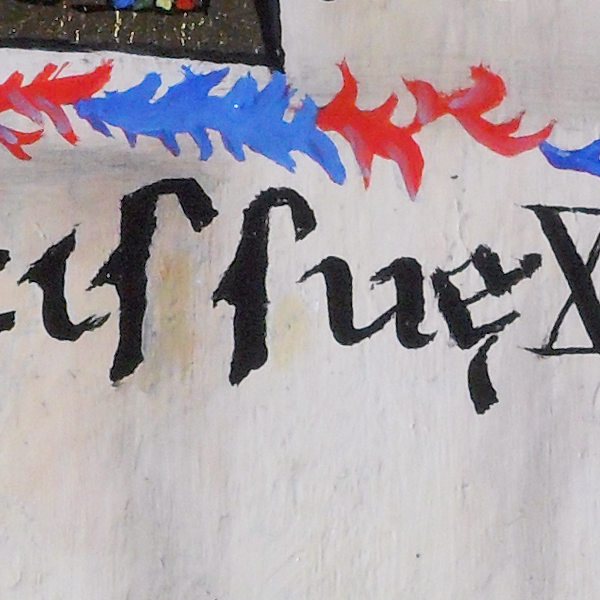 |
 |
| In 'proper' illuminated manuscripts - ie, the ones that are ink on vellum - the lettering is all created using a pen. Here, there is no such luxury and everything has to be done using a small brush and a steady hand. Here, you can see two devices that are used by the scribes who created manuscripts all of those hundreds of years ago using what is called Carolingian Minuscule (a type of lowercase lettering that became the basis of our modern lowercase letters). The text here says; 'Ætatis Suæ XIII'. The first device is that the 's' used is the "Long 's'" - that is to say that it looks a little like an 'f' but it has a bar on only one side. The other is the curl under the 'e' which tells the reader that it is an AE ligature or 'æ'. There are many ligatures used in manuscripts that save space or make writing it easier and some of them tend to appear more frequently towards the end of a line of text, where the scribe is more conscious of the limits of the available space. |
The Hinksman coat of arms. |